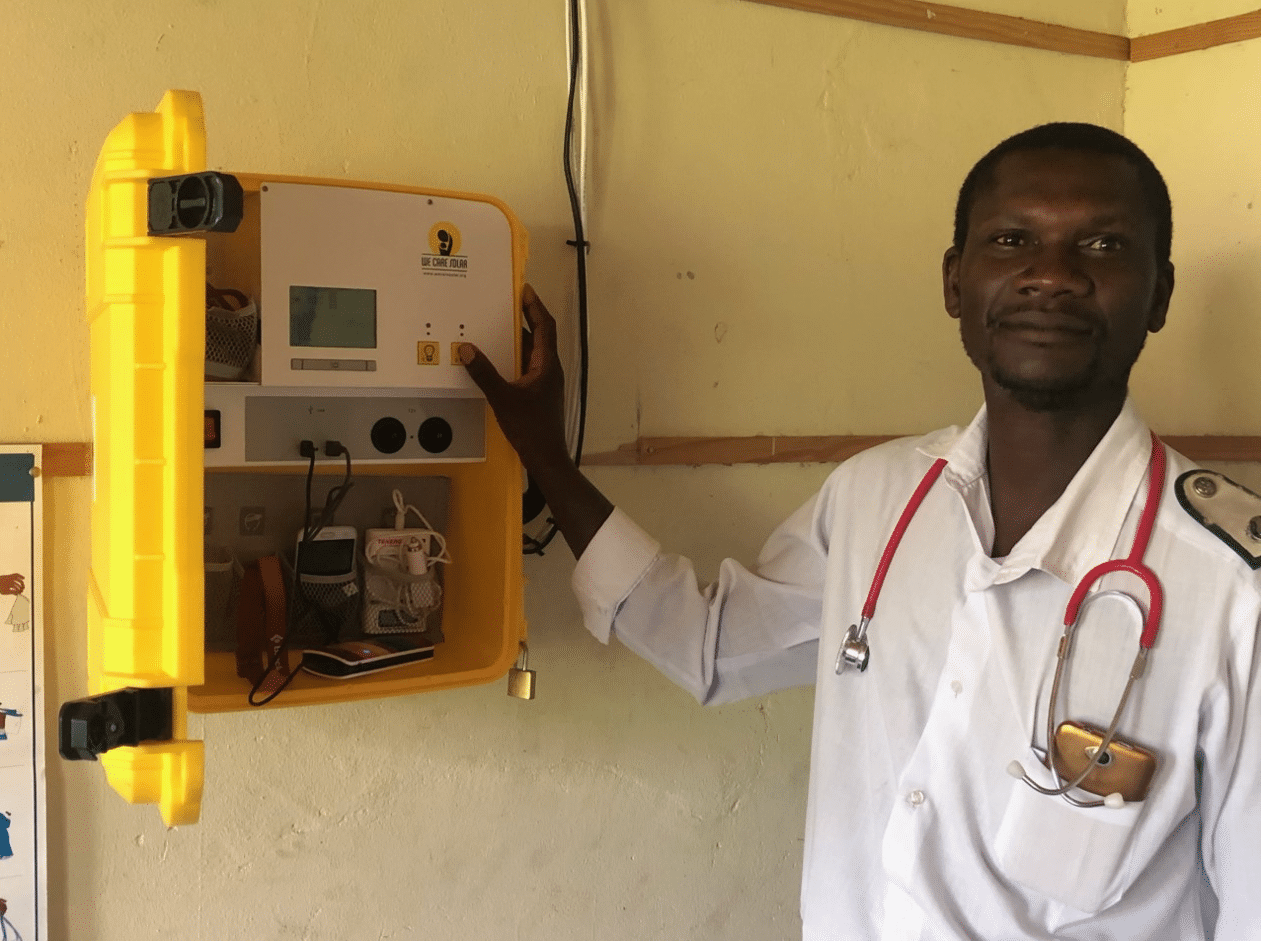Harnessing the Power of Darkness: A Breakthrough in ‘Night-Time Solar’ Energy

Harnessing the Power of Darkness: A Breakthrough in ‘Night-Time Solar’ Energy
In a world where we constantly seek innovative solutions to power our devices and reduce our reliance on traditional energy sources, scientists have made a groundbreaking discovery that could change the game forever. Imagine harnessing the power of darkness, tapping into the energy that surrounds us even after the sun has set. Thanks to a revolutionary breakthrough in ‘night-time solar’ energy, researchers are unlocking the potential of infrared light to generate electricity during the darkest hours.
Traditionally, solar power has been associated with capturing the radiant energy of the sun during daylight hours. However, a team of brilliant minds at the University of New South Wales (UNSW Sydney) has shattered this limitation. By developing a cutting-edge semiconductor known as a thermo-radiative diode, they have tapped into the untapped potential of infrared light emitted by the Earth as it cools down at night.
This innovative technology opens up a whole new realm of possibilities. Instead of relying solely on sunlight, we can now generate electricity even when the world is engulfed in darkness. The thermo-radiative diode acts as a bridge between the natural radiated energy of the Earth and our desire for sustainable power solutions.
Bifacial PV Modules: What they are, Challenges and Opportunities
The implications of this breakthrough are staggering. Imagine a world where batteries become obsolete in certain devices, or where artificial hearts and pacemakers can be powered by the energy emitted in the form of body heat. The potential to eliminate our dependence on batteries and create a more sustainable future is within our grasp.
A Quick Look into UNSW’s Innovative research on ‘Night-Time Solar’ Energy
UNSW researchers have made a major breakthrough in renewable energy technology by producing electricity from so-called ‘night-time’ solar power.
The team from the School of Photovoltaic and Renewable Energy Engineering generated electricity from heat radiated as infrared light, in the same way as the Earth cools by radiating into space at night.
A semiconductor device called a thermoradiative diode, composed of materials found in night-vision goggles, was used to generate power from the emission of infrared light.
The results of the research have now been published in ACS Photonics.
Although the amount of power generated at this stage is very small – around 100,000 times less than that supplied by a solar panel – the researchers believe the result can be improved in the future.
“We have made an unambiguous demonstration of electrical power from a thermo-radiative diode,” said team lead, Associate Professor Ned Ekins-Daukes.
“Using thermal imaging cameras you can see how much radiation there is at night, but just in the infrared rather than the visible wavelengths. What we have done is make a device that can generate electrical power from the emission of infrared thermal radiation.”
Dr Michael Nielsen, co-author of the paper, said: “Even if the commercialisation of these technologies is still a way down the road, being at the very beginning of an evolving idea is such an exciting place to be as a researcher.
“By leveraging our knowledge of how to design and optimise solar cells and borrowing materials from the existing mid-infrared photodetector community, we hope for rapid progress towards delivering the dream of solar power at night.”
The research team believe the new technology could have a range of uses in the future by helping to produce electricity in ways not currently possible.
How does ‘Night-Time Solar’ Energy Work?
Below, we will dive into the science behind ‘night-time solar’ energy and unravel the mysteries of how infrared light can be transformed into a viable source of electricity. We will explore the challenges faced by researchers, the current limitations of the technology, and the immense potential it holds for revolutionizing our energy landscape.
Night-time solar energy can be generated through various methods. One common approach is by utilizing battery storage systems. During the day, solar panels generate excess energy that is stored in batteries. This stored energy can then be used to power homes or other electrical devices during the night when the solar panels are not actively generating electricity.
Another method is through net metering. With net metering, excess energy generated by solar panels during the day is sent back to the electric grid. In return, homeowners receive credits for the surplus energy. These credits can then be used to offset the electricity drawn from the grid during the night.
Innovative research from the University of New South Wales (UNSW) has also shown that Earth’s radiant infrared heat can be used to generate electricity even after the sun has set. This technology, known as “night-time solar,” harnesses the Earth’s heat and converts it into usable energy.
Top 10 Most Paying Renewable Energy Jobs for 2023: Get yourself a winning profile
Overall, through the combination of battery storage, net metering, and emerging technologies, solar energy can be harnessed and utilized during the night, providing a continuous and sustainable source of electricity.
Conclusion
The breakthrough in ‘night-time solar’ energy represents a paradigm shift in our understanding of harnessing the power of darkness. By leveraging cutting-edge technology and innovative thinking, the world can unlock the immense potential of solar energy even during the night. This breakthrough not only paves the way for a cleaner and more sustainable future, but it also opens up new possibilities for powering our world around the clock.
With ‘night-time solar’ energy, we can now tap into the vast reserves of solar power that were previously untapped during the dark hours. This means that we can reduce our reliance on traditional energy sources and make significant strides in combating climate change. By harnessing the power of darkness, we are not only harnessing the power of the sun but also the power of innovation, perseverance, and human ingenuity.
As we move forward, it is crucial to continue investing in research and development to further refine and optimize ‘night-time solar’ energy systems. Governments, businesses, and individuals must come together to support and embrace this breakthrough, as it holds the key to a more sustainable and brighter future for generations to come.
Let us embrace the power of darkness and transform it into a force that illuminates our world, powering our homes, industries, and cities. Together, we can harness the full potential of solar energy, even during the night, and pave the way for a cleaner, greener, and more sustainable tomorrow.
FOLLOW US ON SOCIAL MEDIA
Follow us on LINKEDIN, FACEBOOK, TELEGRAM GROUP and WHATSAPP.
*** ALSO CHECK: HOW TO SIZE A SOLAR SYSTEM – 5 clear steps anyone can follow
HOW TO START A SOLAR COMPANY – do these 6 things and make money through solar
How to Identify Fake Solar Products
SOLAR PANEL LOSSES: All you Need to Know + Tips on how to avoid them
Top 10 Most Paying Renewable Energy Jobs for 2023: Get yourself a winning profile





